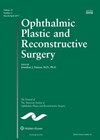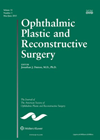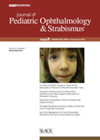You searched for "exposure"
How to get the most out of your medical school ophthalmology placement
2 August 2024
| Neel Vyas
|
EYE - General
Ophthalmology has become a very popular speciality, generating a vast interest amongst medical students with competition for training posts increasing yearly. Yet it is often difficult to get adequate exposure to the speciality prior to applications, with very limited time...
Could you mentor budding ophthalmologists in London?
25 January 2022
King’s College London Ophthalmology Society is looking for ophthalmologists from any level based in a London hospital that would be able to give guidance and support to a medical student.
What are the features of facial nerve palsies in children?
The aim if this study was to report ophthalmic related findings and complications in children with facial palsy. Medical records from a tertiary centre were retrospectively searched for children 16 years and under with a diagnosis of facial palsy, over...Myopathic ptosis and lower lid retraction surgery
This is a description of a surgical technique which simultaneously addresses both the upper lid ptosis and lower lid retraction in patients with moderate to severe myopathic ptosis. The procedure was performed on 16 eyes of nine patients and involved...A tarso-conjunctival flap for paralytic ectropion
This is a review of 110 patients with paralytic ectropion who underwent a lateral tarso-conjunctival flap procedure. The technique involves fashioning a 4-8mm wide lateral tarso-conjunctival flap in a similar way to a lateral Hughes flap. This is then sutured...Silicone rod for ptosis surgery
The authors report their results and complications associated with the use of silicone rod for frontalis suspension lid surgery. This was a retrospective study of 38 eyes (25 patients) with six months follow-up. The group included 19 males and six...International Ophthalmology Conference 4th Edition
23 March 2026
-25 March 2026
A transformative experience awaits at the “4th Edition of International Ophthalmology Conference” (IOC 2026), taking place from March 23-25, 2026, in Singapore and Virtually. Anchored in the theme "Unlocking New Frontiers in Vision Science and Eye Care", this global platform...
A week in the world of ophthalmology: A reflective journey at New Cross Hospital
3 October 2024
| Nikhil Sharma
|
EYE - General
Embarking on a taster week in ophthalmology at New Cross Hospital was a decision fuelled by the desire to delve into the intricacies of this unique specialty, which blends surgical and medical traits. For foundation doctors, a taster week is...
If looks could kill – kohl and the eye
5 August 2020
| Simerdip Kaur
|
EYE - General
Simerdip Kaur takes a look at the latest ophthalmology-related news stories and asks which are based on facts and which are ‘fake news’. Headline: If looks could kill – kohl and the eye Human fascination with beautification can be traced...
Will COVID-19 impact the selection of ophthalmology as a career choice by medical students?
10 December 2020
| Dalia Abdulhussein
|
EYE - General
The COVID-19 pandemic has had profound effects on medical education and has called for large shifts in the medical curriculum. Clinical attachments were suspended at the height of the pandemic and examinations were cancelled or were moved to an online...
My Top Five: Foundation year 3 jobs for prospective ophthalmology candidates
3 February 2023
| Yarrow Scantling-Birch, Zaria Ali
|
EYE - General
Ophthalmology specialist training (OST) is a fantastic career option, however, it is also a highly competitive specialty. There was a gradual rise in competition ratios in recent years: 3.24 (2019), 5.73 (2020), and 6.80 (2021) [1]. Many choose to pursue...
My Top Five: Foundation year 3 jobs for prospective ophthalmology candidates
3 February 2023
| Yarrow Scantling-Birch, Zaria Ali
|
EYE - General
Ophthalmology specialist training (OST) is a fantastic career option, however, it is also a highly competitive specialty. There was a gradual rise in competition ratios in recent years: 3.24 (2019), 5.73 (2020), and 6.80 (2021) [1]. Many choose to pursue...







